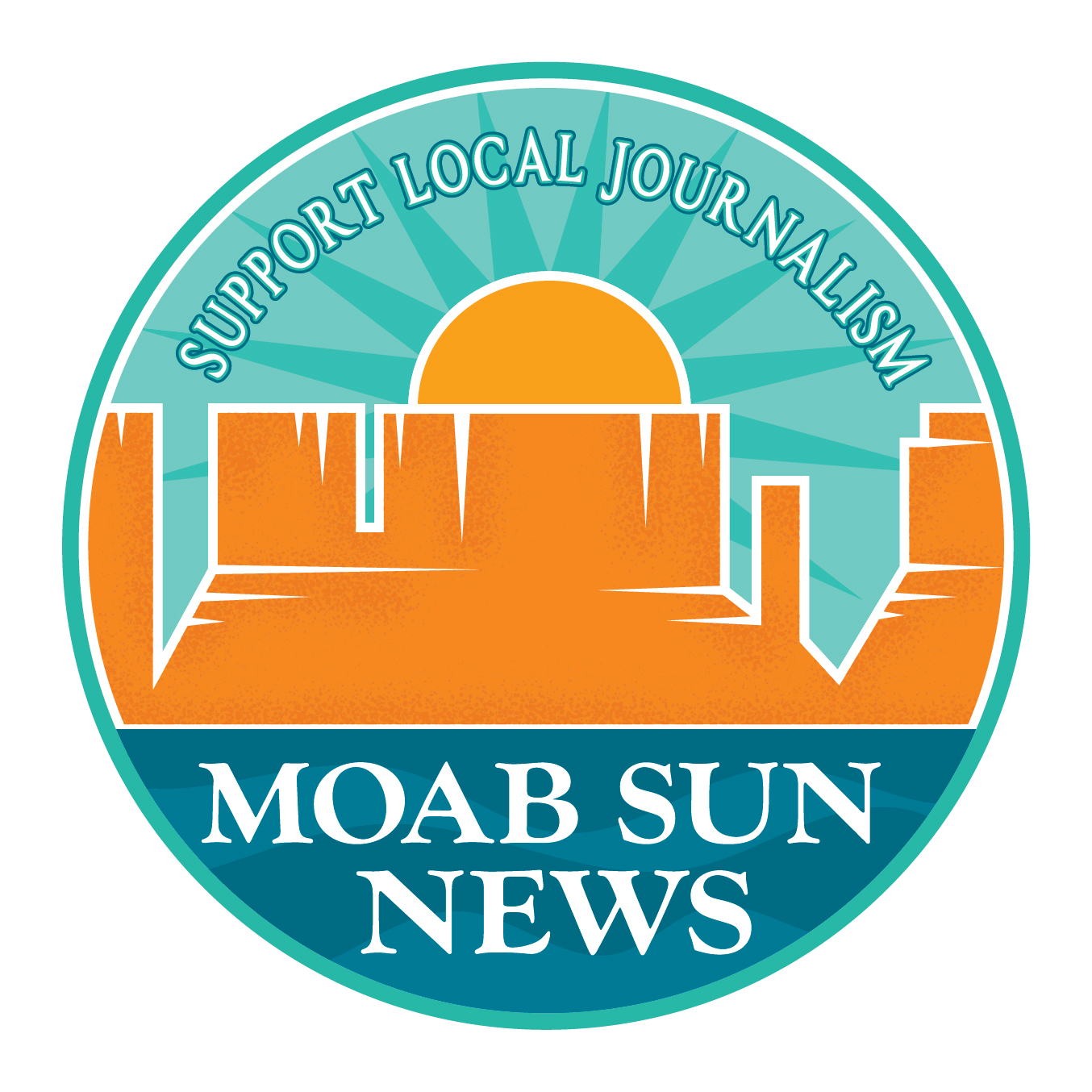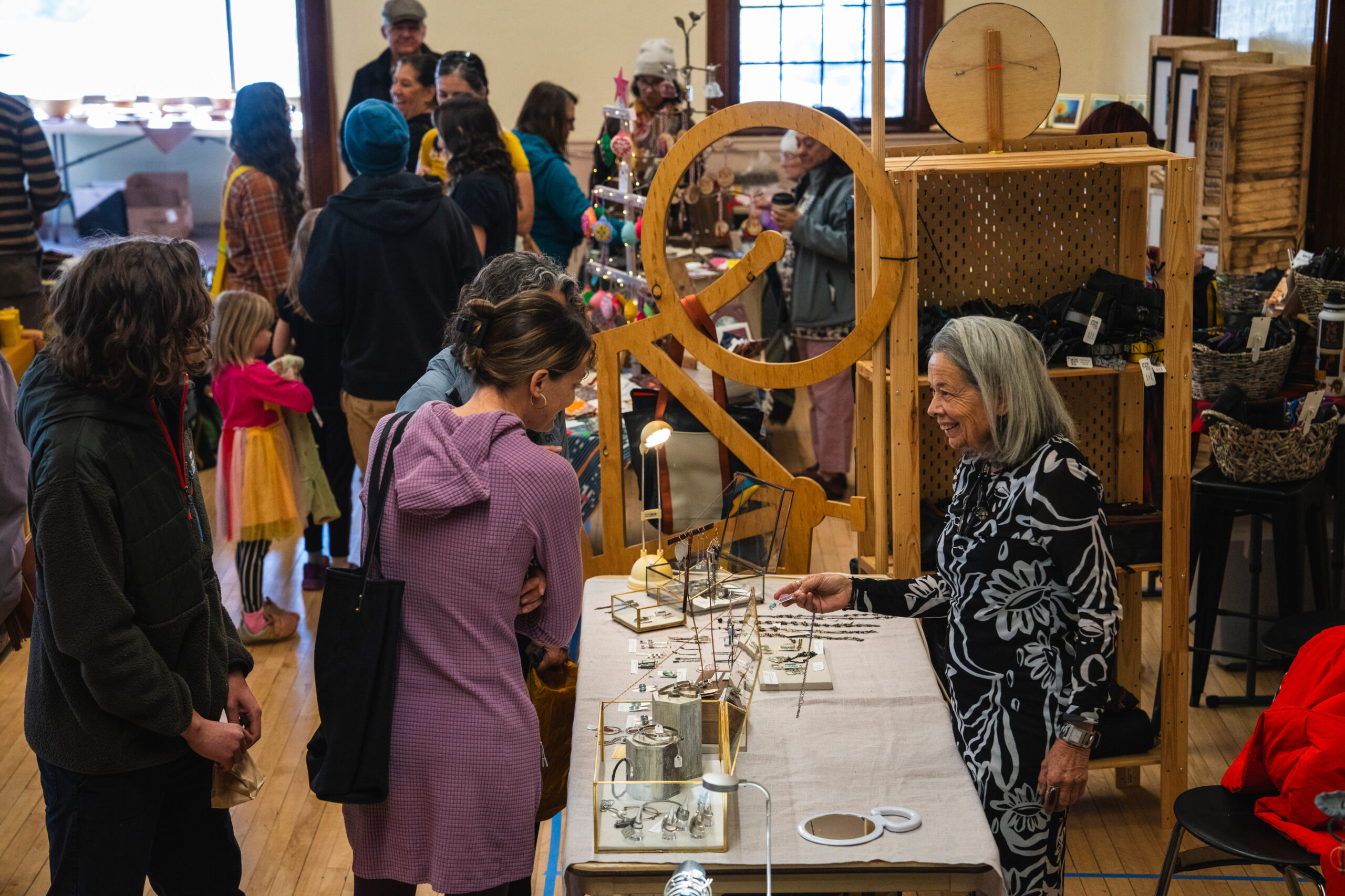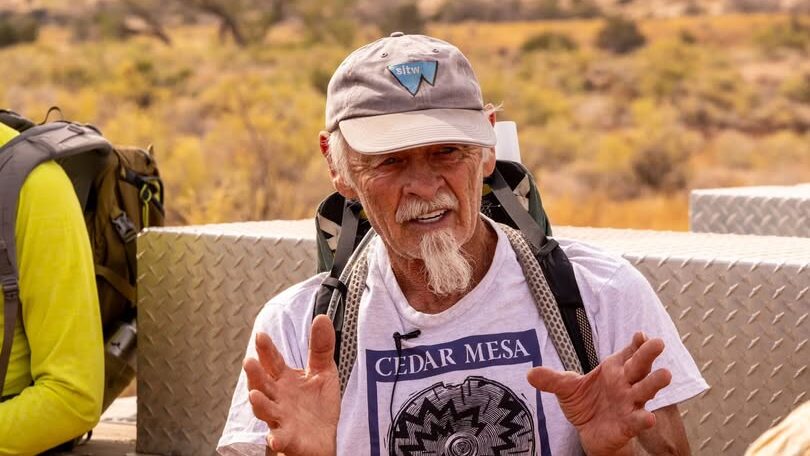Some information may be outdated.
Earlier this summer, a chunk of the dinosaur bone on display at the Moab Museum—the Wiren Femur, which belonged to a 70-foot-long, 25-ton sauropod that lived over 150 million years ago—separated from the rest of the fossil. The fossil was discovered by hiker Paige Wiren in 2017, and after some time in storage, had been on display for three and a half years.
The dino needed special conservation, so the museum called in the experts: the local “Gastonia” chapter of the Utah Friends of Paleontology, a nonprofit volunteer organization “dedicated to preserving Utah’s fossil resources through public education and engagement,” according to its website.
“One of the reasons the organization was started 30 years ago was to put together a training program for volunteers to learn how to work with fossils properly,” said Lee Shenton, the chapter president. For dinosaur lovers, the nonprofit provides an avenue to talk with working paleontologists, to learn the ins and outs of fossil work, and to share that knowledge with other people.
When the museum called, Shenton said, he pulled together a group of members who had experience doing hands-on fossil work.
The group also called Dr. Julia McHugh, the curator of paleontology at the Dinosaur Journey museum in Fruita, Colorado, to assist. The team applied a fossil adhesive, PaleoBond, to the fossil fracture; they then applied a color-matched epoxy filler, PaleoSculpt, to secure everything.
Sometimes the professionals don’t enjoy doing tedious fossil work, Shenton said—that’s where the Friends of Paleontology come in.
“The pros teach us amateurs how to do that work,” Shenton said. “And we’re happy to do it.”

The Gastonia chapter was founded in 2014 when the Bureau of Land Management’s local paleontologist, Rebecca Foster, spearheaded a local meeting. The Friends of Paleontology now have five chapters statewide: Great Basin (Salt Lake City), Unita (Vernal), Southwest (St. George), Castle Country (Price), and Gastonia (Moab).
Membership has fluctuated over the years, Shenton said—in 2016, when the Gastonia chapter hosted the annual conference for the statewide organization, there were nearly 70 members. The COVID-19 pandemic shrunk membership down to around 20 people, but this year, numbers are “creeping back up,” he said.
The goal of the organization is to support the science—they do this by providing amateur volunteers to help out the professionals, like in the case of the fractured museum bone—and educate the public about paleontology.
The Moab chapter does this through its monthly meetings with paleontologists: its next meeting on August 30 will feature Andrew RC Milner from the St. George Dinosaur Discovery Center. Milner will present a talk titled “The End-Triassic Extinction and the Rise of Dinosaurs in the American Southwest.” All meetings are open and free to the public.
In addition, the group runs a fossil preparation laboratory at Moab Giants: there, they help out with fossil prep, but also answer questions and give tours to any visitors who come through. In the year or so the group has run the lab, Shenton said, they’ve talked to over 7,000 people.
“I enjoy educating the public, especially school-aged kids—they’re terrific to work with since they’re motivated and knowledgeable,” he said. “It’s good for the parents, too, because they can get to know a bit about what their child is getting involved in. It’s a great family thing, and it’s a big deal that we can bring people into the lab to access the fossils.”
That’s the biggest benefit to becoming a member: the chance to work with dinosaur fossils. Members don’t need to have had any prior paleontology experience to join; they only need a love of the subject.
The chapter’s advisor is Dr. Martin Lockley, a world-class expert on dinosaur footprints. Lockley travels the world often studying new discoveries, but when he’s in town, he calls on local chapter members to assist him in surveying new areas.
“Probably a third of our actual members have had some experience either in the field helping to query fossils, or in the labs helping prepare them,” Shenton said. “The rest of the folks just have a lot of interest in it.”
You can keep up with the Gastonia chapter’s events, or become a member, at www.utahpaleo.org. The next meeting of the local Utah Friends of Paleontology is on August 30.
Appreciate the coverage? Help keep local news alive.
Chip in to support the Moab Sun News.





